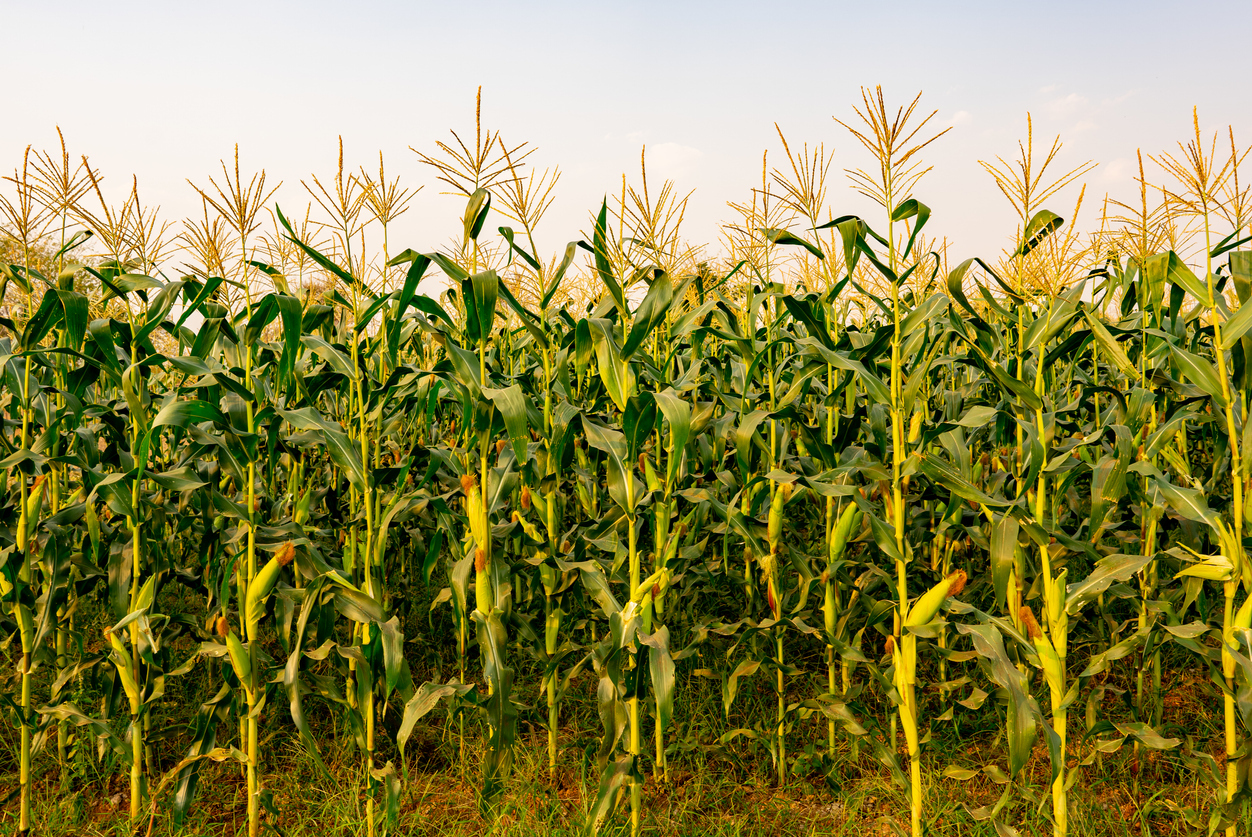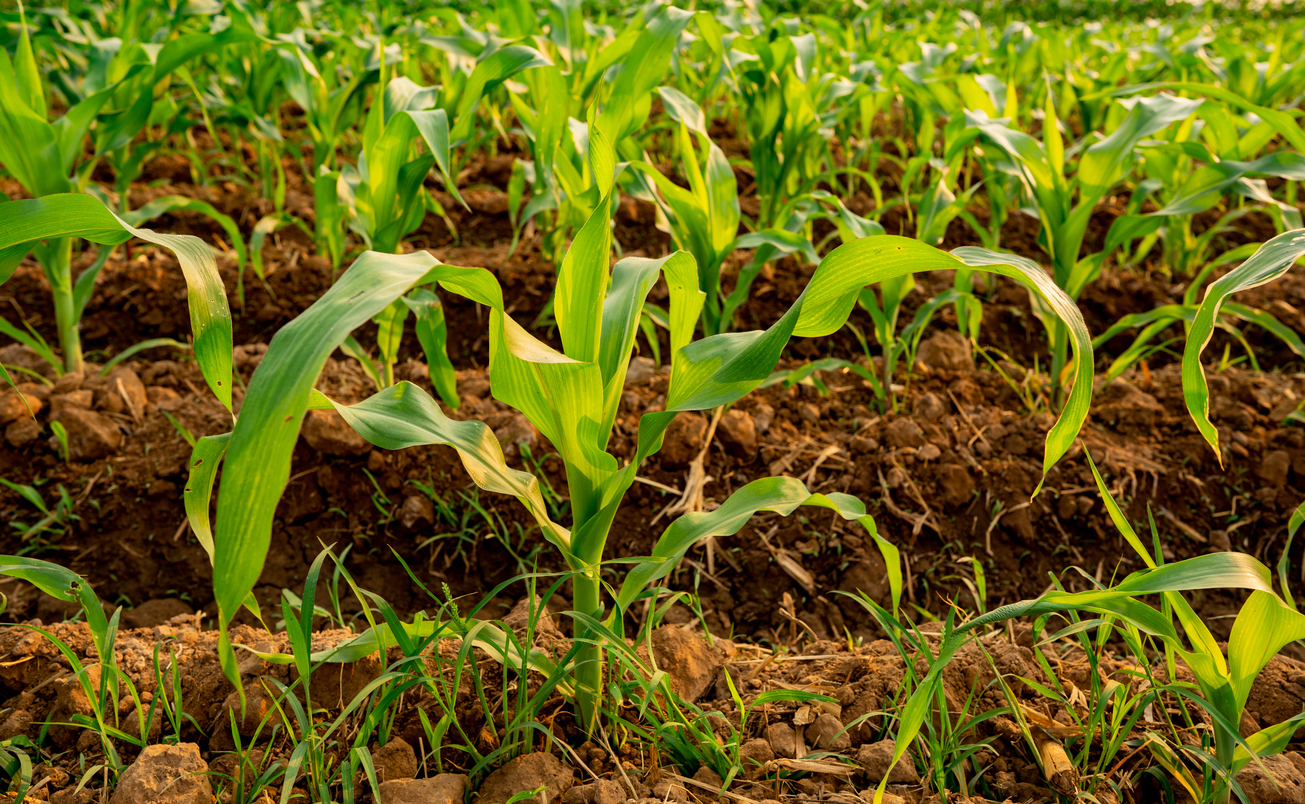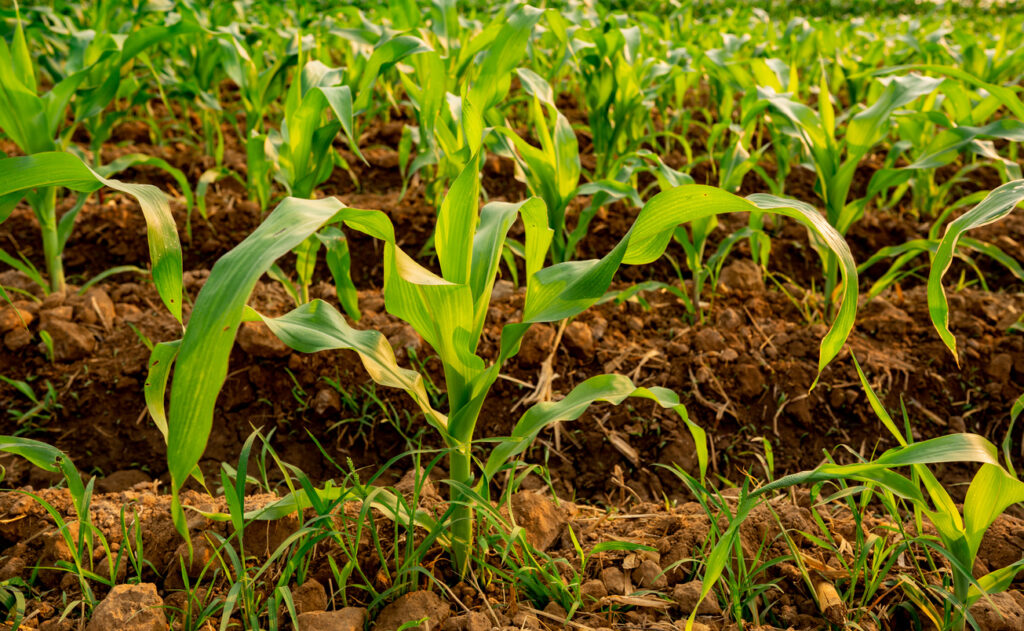Growing Sweet Corn – How To Grow, Care For, And Harvest Sweet Corn
Sweet corn is part of every cookout, BBQ, or summer get-together you plan for your friends and family. For many, sizzling corn is the very definition of comfort food. You can cook sweet corn in soup, stew, on its own, or as part of a healthy and nutritious meal.
This delicious vegetable has been growing in backyards and fields across North America for thousands of years. So it stands to reason that you’d want to continue the tradition and grow sweet corn in your garden. That way you’ll enjoy fresh corn on the cob all summer long.
If you’re wondering which sweet corn variety to grow and how long it takes for you to harvest your ripe ears of corn, this article provides a comprehensive guide to growing and harvesting sweet corn.
All about Sweet Corn
A member of the grass family, sweet corn (Zea mays L.) is a sweeter variety of maize. History tells us that Native Americans have been growing sweet corn for well over 4000 years long before the first settlers had set foot on the continent. An annual, sweet corn has a high yield as each plant carries about two ears on average. Some dwarf corn varieties bear about 3 ears of corn for each plant.
As a native plant of North America, sweet corn grows just about everywhere and has hardiness zones between 3 to 11. For best results, you should start growing corn when the temperature of the soil reaches 60 degrees Fahrenheit. Optimal temperatures between 60 and 90 degrees F ensure a good yield.
The average plant reaches anything between 4 to 12 feet depending on the variety you grow. Corn kernels come in many colors including yellow, white, deep purple, or a combination of all of these colors.
Sweet Corn Varieties
Sweet corn usually falls under one of three categories. The first is sugary or SU. This type has a high tolerance for cold weather although it doesn’t have a good shelf life. You’ll need to consume it within a few days after you harvest it.
The second type is called ultra-sweet or SH2. It has a high concentration of sugar although it is not easy to grow. The ripe ears of corn would last about one week in the fridge before they lose their flavors and sweetness.
The third type is called sugar extended or SE for short. It is the most popular corn variety that you’ll find in grocery stores. The kernels are usually sweet, crisp, and tender. You can store it for a couple of weeks in the fridge where it will remain fresh and tasty.
Here are some sweet corn varieties to grow in your garden.
- Blue Hopi: This sweet variety belongs to the SH2 type and grows to 5 feet when mature. The ears of corn are about 7 inches long and are deep purple in color. You can harvest it after about 100 days from planting the seeds.
- Ambrosia Hybrid: The name says it all. This variety belongs to the SE type with extra sweetness and lots of flavors. The mature plant reaches about 6 feet tall and produces 8-inch long yellow ears of corn. It takes only 75 days for the ears to be ready to harvest.
- Golden Bantam: A relatively new hybrid that was introduced in 1902. It gained popularity in a short time thanks to its sweetness and tolerance to cold zones. The mature stalk reaches a little over 5 feet and carries two golden ears that reach about 5 inches.
- Jubilee Hybrid: A high-yield variety that produces 9-inch long ears lined with rows of golden kernels. You’ll be able to harvest the ripe ears within 90 days from the time you plant the corn.
How to Grow Sweet Corn
Growing sweet corn in your garden takes a little bit of hard work. But if you have the time and patience, you’ll be eating fresh corn within three months or less. There’s no need to start the seeds indoors as you should plant the corn in the garden right away. Here’s how to grow sweet corn in easy steps.
- Since corn grows in warm conditions, you’ll have to wait for the last frost before you sow the seeds. Once the soil temperature is 60 degrees F or above, that’s the best time to start your corn.
- Choose a sunny spot that gets the afternoon sun, especially an area facing the west or south.
- Break the topsoil to make it loose then work in about 2 inches of aged compost. Mix it well with a rake.
- Divide the area into rows. You’ll need at least 4 rows for better pollination. Space the rows 36 inches out from each other.
- Add a well-balanced fertilizer with a 10-10-10 formula to the soil prior to sowing the seeds. Corn is a heavy feeder, so a 100-foot row will need about 4 cups of fertilizer.
- Soak the corn seeds in water overnight. Remove any seeds that float since they will not germinate.
- Plant the seeds about one inch deep in the rows. Keep at least 4 inches between each seed to improve air circulation between the stalks.
- Cover the seeds with loose soil but don’t pack it firmly.
- Water the rows to get the soil wet. The seeds need plenty of moisture to germinate.
- Extra sweet corn will require more water.
- After the seedlings reach about 6 inches tall, thin them out to 8 to 10 inches apart.
Sweet Corn Care
Since sweet corn is a heavy feeder and a thirsty plant, you’ll have your hands full feeding, watering, and weeding for the next 90 days or so.
Soil
Sweet corn grows best in loose and rich soil. If the soil in your garden is neither rich nor loose, you can still fix it. Add coarse sand at a ratio of 1:2 and work it well into the soil. After adding the sand, check how loose the soil is by clasping your hand over a fistfull of soil. If it remains loose, then it’s good to plant, otherwise, add more sand or perlite. You’ll also need to till the topsoil and leave it exposed to the sun for a few days before sowing the seeds. Corn prefers neutral or slightly acidic soil so test your pH levels and adjust them to reach anything between 5.5 and 7.0.
Water
You’ll have to adjust your irrigation based on the type of sweet corn you grow. SE corn types usually require more water than the other two types. This is especially true in warm zones where the corn stalks tend to grow at faster rates than in cold areas. So keep the soil moist and water the plants frequently to ensure a good crop. Sweet corn is sensitive to drought and the stalks will start to wilt if the soil goes dry for a few days at a time. When you water the plants, aim toward the base and never let the tassels get soaked with water. This would impact pollination and could be detrimental to the crops.
Fertilizer
Your sweet corn will need plenty of nitrogen both before planting and throughout its life. Before you sow the seeds, spread organic compost on the ground after you break the soil and mix it in thoroughly with a rake. You’ll also need to add 4 cups of fertilizer to each row of 100 feet long. Once the plants are growing to about 10 inches tall, apply aged manure and water the plants. Use a 10-10-10 formula fertilizer when the stalks are 18 inches tall. When the tassels appear at the top of the stalk, apply fertilizer one last time.
Pests
Sweet corn attracts so many pests and bugs, you’ll need to check on the plants on a daily basis. The pests to keep an eye out for are cutworms, corn earworms, flea beetles, corn borers, and wireworms. Most of these bugs feed on the sweet sap of the kernels but some like cutworms and flea beetles eat the leaves. So to help you manage your plants better, remove the leaves from the base all the way to the middle of the stalk. This will discourage the bugs from attacking the corn plants. When you find a bug, pick it up by hand and destroy it. In the case of corn earworms, you’d have to remove the whole infected ear of corn to prevent the spread of the bugs to the rest of the plants.
Diseases
You won’t be just fielding the attacks of pests, but sweet corn is also prone to many diseases. Corn smut is a fungal disease that causes the kernels to swell before they turn gray or black. It spreads easily, especially where humidity is high and ventilation is poor. Remove the infected plants and burn them.
Another disease that hits the young corn plants is Stewart’s wilt. Flea beetles spread this disease that causes the leaves to turn yellow and stunts the growth of the stalks. You can manage this disease by preventing flea beetles from feeding on the plant. Experts recommend surrounding the area with ash or lime to keep the beetles away.
Harvesting Sweet Corn
When your corn ears are ripe you’ll need to collect them all at once. The window is usually small between tender and sweet kernels and hard ears that you can only grind to make flour. Most varieties need anything between 60 to 100 days to become ripe. Don’t pick the ears when they’re too young.
To harvest the ears of corn, hold the ear with one hand and the stalk with the other hand, then pull the ear down against the stalk. It usually snaps off easily. If it doesn’t, just give it a twist to the left or right as you pull it away.
Most sugar extended (SE) varieties of sweet corn have a long shelf life. To store them, wrap the ears with wet paper towels and put them in a plastic bag. They will remain fresh in the freezer for up to 3 months after harvesting.



